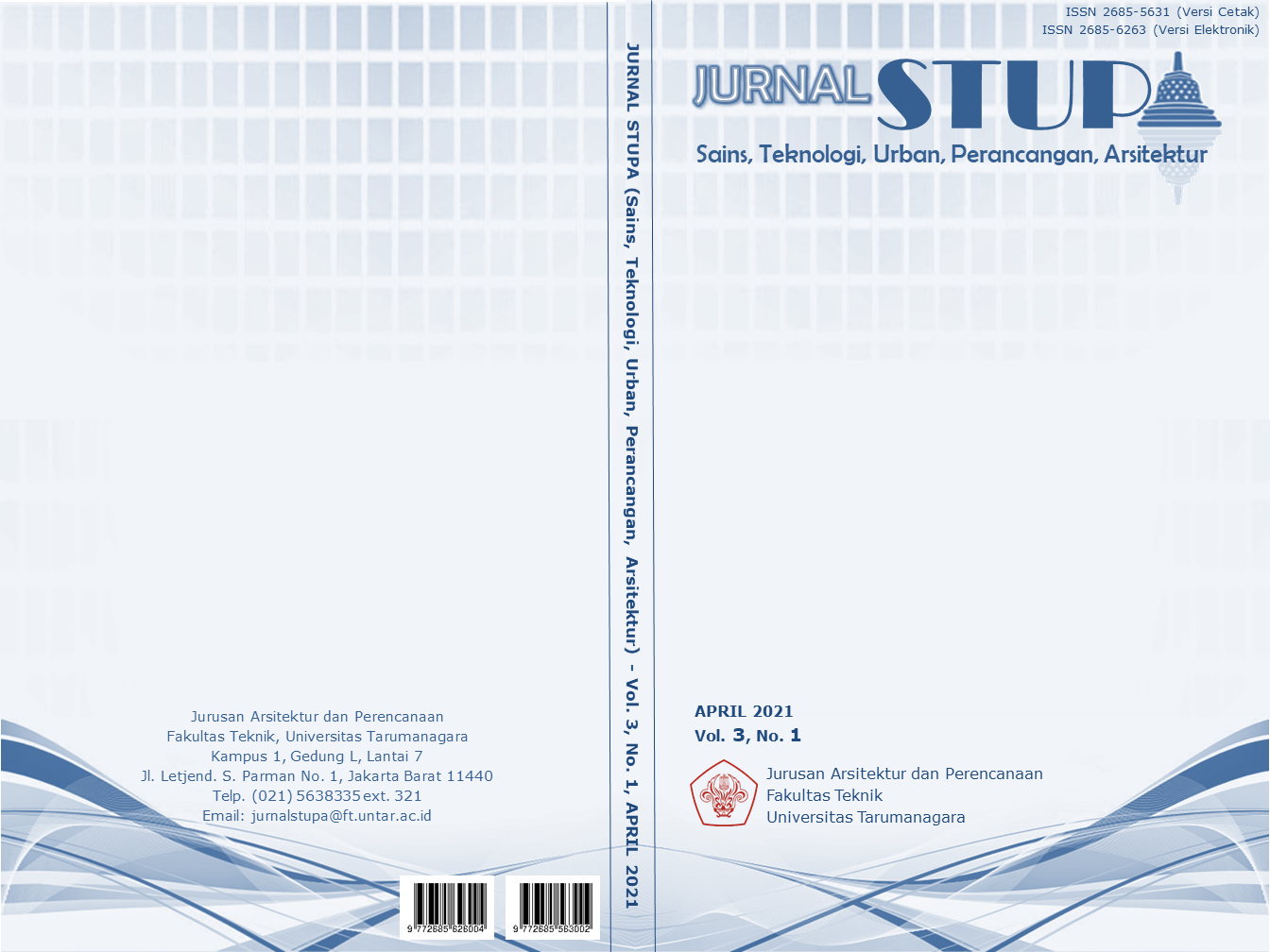TAMAN KOMUNITAS BSD: UPAYA KEMBALI PADA ALAM BACK TO NATURE: COMMUNITY GARDEN
Main Article Content
Abstract
The West BSD area is an area that will become CBD BSD where most of the land use is commercial and residential. In this area, if it becomes a CBD area, it will have few green spaces. With circumstances like this can trigger stress in the community. This project seeks to reduce stress as well as provide a new green space for this area where later in this project has a place for interaction between people as well as interactions with nature (plants). Using the self-sustaining method is a big concept of this project. This concept is applied to urban farming activities where people can grow crops, care for plants until harvesting, then the harvest can be sold or used as ingredients in restaurants. The remaining seeds can be planted again to make new crops. Using a program of activities like this can reduce human stress which at the same time enlivens nature (green). By using the application of the biophilic design method in the Back To Nature: Community Garden project, efforts are made to create a good communal space for people who can carry out activities such as planting plants, working, gathering, etc. And with this it is hoped that the project can provide a forum for the community to carry out activities in the fields of interest, especially planting plants, caring for plants, as well as activities around them.
Keywords: Back To Nature: Community Garden; provision of green space; reducing stress; interaction; biophilic design
Kawasan BSD Barat adalah kawasan yang akan menjadi CBD BSD dimana kebanyakan tata guna lahannya adalah komersial dan perumahan. Pada kawasan ini jika nantinya menjadi kawasan CBD akan memiliki sedikit ruang-ruang hijau. Dengan keaadaan seperti ini dapat memicu stres pada masyarakatnya. Proyek ini berusaha untuk mengurangi stres juga menyediakan ruang hijau baru bagi kawasan ini dimana nanti didalam proyek ini memiliki tempat interaksi antara sesama manusai juga interaksi dengan alam(tanaman). Dengan menggunakan metode Self sustaining adalah konsep besar dari proyek ini. Konsep tersebut diterapkan pada kegiatan urban farmingnya dimana masyarakatnya dapat menanam tanaman, merawat tanaman hingga panen, kemudian hasil panennya pun dapat dijual atau digunakan sebagai bahan-bahan didalam restoran. Sisa-sisa benihnya pun bisa kembali ditanam untuk menjadikan hasil tanaman yang baru. Dengan penggunaan program kegiatan seperti ini dapat mereduksi stress manusia yang sekaligus menghidupkan alam(hijau). Dengan menggunakan penerapan metode biophilic design pada proyek Back To Nature: Community Garden ini diusahakan menciptakan ruang komunal yang baik bagi masyarakat yang dapat menjalankan aktifitasnya seperti menanam tanaman, bekerja, berkumpul, dsb. Dan dengan ini diharapakan proyek dapat menyediakan wadah untuk masyarakat bisa melakukan aktifitasnya pada bidang yang diminatinya khususnya menanam tanaman, merawat tanaman, juga beraktifitas disekitarnya.
Article Details
References
Ellin, N. (2006). Integral Urbanism. New York: Routledge
Oldenburg, R. (2005). The great good place: Cambridge. Philadelphia: Da Capo Press.
Supplemental Material for Differentiation of Cognitive Abilities Across the Life Span. (2009). Developmental Psychology. doi:10.1037/a0015864.supp
Williams, F. (2017). The Nature Fix. New York: W. W. Norton & Company
SPARK Proposes Vertical Farming Hybrid to House Singapore's Aging Population
Menanam Pohon, Cara Paling Efektif dan Murah Atasi Pemanasan Global
PATTERNS OF BIOPHILIC DESIGN
https://www.terrapinbrightgreen.com/reports/14-patterns/
Toronto’s Urban Farming Residence Will Bridge the Gap Between Housing and Agriculture


